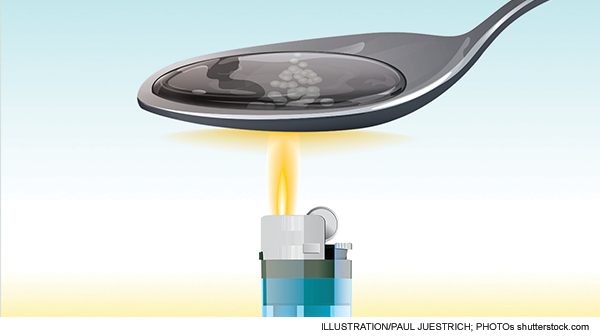
Despite the United States encompassing just 5 percent of the world’s population, it accounts for 84 percent of oxycodone (Oxycontin) and a whopping 99 percent of hydrocodone (Vicodin, Lortab) global consumption. Unfortunately, the prescription opiate epidemic is worsening.
Explore This Issue
ACEP Now: Vol 33 – No 06 – June 2014New, Controversial Opioid Option
Since March 2014, patients and physicians have had a new option with a hydrocodone tablet, Zohydro ER (hydrocodone bitartrate). Hydrocodone (Zohydro ER’s sole ingredient) is one of the most frequently prescribed and, unfortunately, abused opioids. One of the advantages of Zohydro ER is that the relief, or high, can last up to 12 hours per dose.1 Zohydro ER is specifically indicated for the management of pain severe enough to require daily, around-the-clock, long-term opioid treatment and for which alternative treatment options are inadequate. Following Zohydro ER ingestion in premarketing studies, hydrocodone levels peak in five to six hours.
According to the package insert, the starting dose for patients who are not opioid tolerant is Zohydro ER 10 mg orally every 12 hours; this is the lowest dose. The package insert defines patients who are opioid tolerant (the target population) as those receiving, for one week or longer, at least 60 mg oral morphine per day, 25 mcg transdermal fentanyl per hour, 30 mg oral oxycodone per day, 8 mg oral hydromorphone per day, 25 mg oral oxymorphone per day, or an equianalgesic dose of another opioid.2
The presumed benefit of Zohydro ER—other than its strength—is that it doesn’t contain acetaminophen, as do Vicodin and Percocet. It’s on this basis that its maker, Zogenix, has argued that it’s safer than the alternatives. Currently, there are other opiate painkillers on the market that don’t contain acetaminophen. Current recommendations to minimize any risk of hepatotoxicity following chronic acetaminophen use resulted in the Food and Drug Administration recommending reducing the daily dose from 4 grams to 3 grams daily.
According to the Centers for Disease Control and Prevention, prescription opioid deaths have more than quadrupled since 1999. There were 4,030 deaths involving the drugs in 1999, compared with 16,651 in 2010. Therefore, why would the FDA approve Zohydro ER? A better question is, how they could not? If a drug meets FDA requirements, it must be approved if similar drugs have been approved. Zohydro ER could not be scapegoated simply by virtue of being an opioid or for the “sins” of other opiates. Of the Zohydro ER approval process, Bob Rappaport, MD, director of the FDA’s Division of Anesthesia, Analgesia, and Addiction Products, said, “We are obligated at the agency to operate within the regulatory framework, and that includes providing a level playing field for industry. We don’t have a choice by that. It’s the law.”3
Pages: 1 2 3 | Single Page




One Response to “Emergency Physicians Urged Not to Prescribe New Opioid, Zohydro ER, Given High Potential for Abuse”
March 27, 2019
DavidDoctors need to be aware of a patient’s true need for an Opioid drug. They need more training to determine a patient’s potential for abuse.